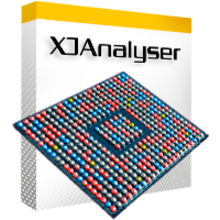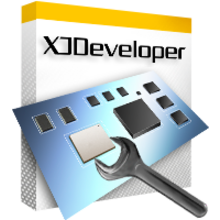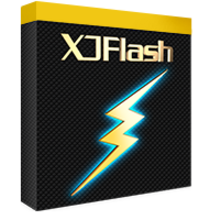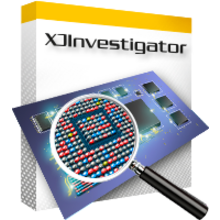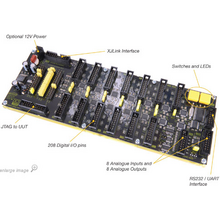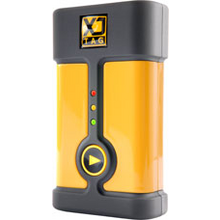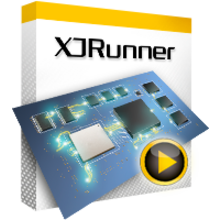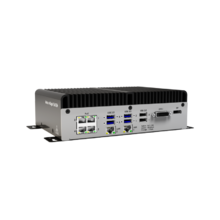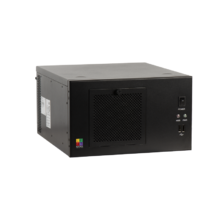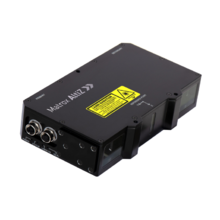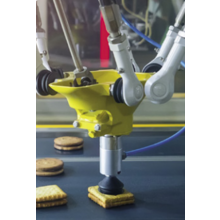Products
Displaying 1177 - 1188 of 1197
Only BSDL files required to get the board up and running
Set up pin states – e.g. low, high, toggling
Trace shorts, opens and other signals
Easy low-level access to device pins/busses
Clear display of the pins/balls with variable zoom levels and split screen
View JTAG chain data as waveforms
Quickly find and monitor changing pins
Program devices with SVF and STAPL files
Real-time interaction
XJIntegration (use XJAnalyser functionality from other software)
Reduce your time spent debugging boards due to high precision fault isolation
Improve your time to market and reduce project risk by early design verification
Reduce your test development time by reusing tests from prototype/design in manufacturing and field support
Ongoing time savings by test reuse across projects
Reduce flash programming times
SPI, QSPI, parallel NOR flash devices supported
Support for NAND flash devices available on request
Shortened development cycles
No need for additional equipment
Can be used for fast firmware upgrade
No FPGA development required
Repair-focused environment for XJDeveloper / XJRunner tests.
Full Connection test.
RAM, Flash and other non-JTAG device tests.
Flash, FPGA, CPLD and EEPROM programming.
Layout Viewer* to show the physical location of faulty nets, pins and components.
Schematic Viewer* to show the circuit design around faults.
Direct control of the pins/balls of JTAG devices.
View pin states graphically in real time or capture them in the Waveform Viewer.
Trace signals to identify shorts, opens and other faults.
Improve reliability of your boards by increasing analogue and digital test coverage
Reduce your debug time by enhanced fault isolation
XJTAG can reduce the cost and complexity of your custom test jigs
Reach your devices on non-JTAG boards with ‘Black box’ testing
Small, lightweight, portable design: ideal for lab and field work
Self-contained licence so you can use the XJTAG system on multiple PCs
Re-configurable unit for multiple UUTs saving costs
Improves your QA through configurable logging
Allows you to retain power of control on how boards are tested by third parties
User-friendly environment reduces your training costs for production operatives
Ability to test multiple boards, simultaneously, by using multiple XJLinks
Reduce service stoppages with a fanless design
Inspect multiple sites through the support for four GigE Vision and four USB3 Vision cameras
Simplify cabling for GigE Vision installations using Powerover-Ethernet (PoE)-enabled ports
Tackle deep learning and traditional machine vision applications with a mobile-class embedded twelfth-generation Intel Core processor
Connect separately to the factory floor and enterprise networks via two more Gigabit Ethernet ports
Synchronize with other equipment using the integrated real-time digital I/Os with rotary encoder support and RS-232/RS-485 ports
Tackle demanding imaging applications using an eighth-generation Intel Core processor
Capture directly from GigE Vision® and USB3 Vision® cameras
Broaden support for Camera Link® , CoaXPress® , DisplayPort, HDMI, and SDI video interfaces using Zebra frame grabbers
Customize I/O capabilities through four PCIe slots accepting full-height, half-length cards
Install in space-limited industrial environments given its small footprint and rugged design
Streamline application development using the Aurora Design Assistant flowchart-based IDE or the Aurora Imaging Library SDK
Leverage dual-camera single-laser design to deliver exceptionally high 3D reproduction fidelity
Scan scenes quickly with profiling rates of up to 11,000 per second
Gain from unique embedded algorithms to generate consistent profiles, depth maps, or point clouds
Benefit from truly standard GigE Vision® interface to work directly with Zebra Imaging and third-party vision software
Simplify cabling with Power-over-Ethernet (PoE) support
Deploy confidently in tough industrial settings thanks to a solid IP67-rated2 aluminum housing and M12 connectors
Benefit from several fastening points to facilitate fixing one or more sensors to gantries and robots
Solve machine vision applications efficiently by constructing flowcharts instead of writing program code, using field-proven tools for analyzing, classifying, locating, measuring, reading and verifying
Use a single program for creating both application logic and operator interface
Leverage deep learning for visual inspection through image classification and segmentation tools
Rely on a common underlying vision library for the same results with an Iris GTX smart camera, vision systems or third-part computer
Work with multiple cameras all within the same project or per project running concurrently and independently from one another, platform permitting
Solve applications rather than develop underlying tools by leveraging a toolkit with a more than 25-year history of reliable performance
Tackle applications with utmost confidence using field-proven tools for analyzing, classifying, locating, measuring, reading and verifying
Base analysis on monochrome and color 2D images as well as 3D profiles, depth maps and point clouds
Harness the full power of today's hardware through optimizations exploiting SIMD, multi-core CPU and multi-CPU technologies
Support platforms ranging from smart cameras to HPCs via a single consistent and intuitive API
